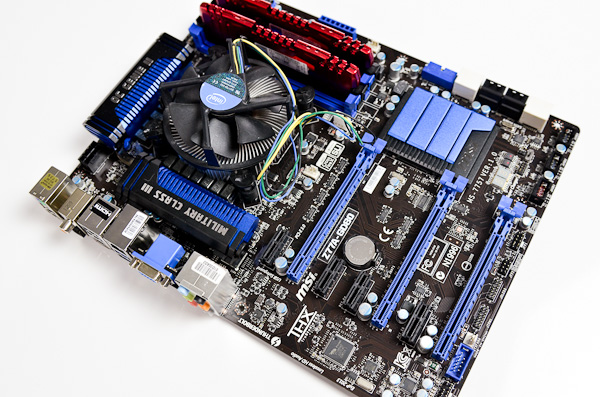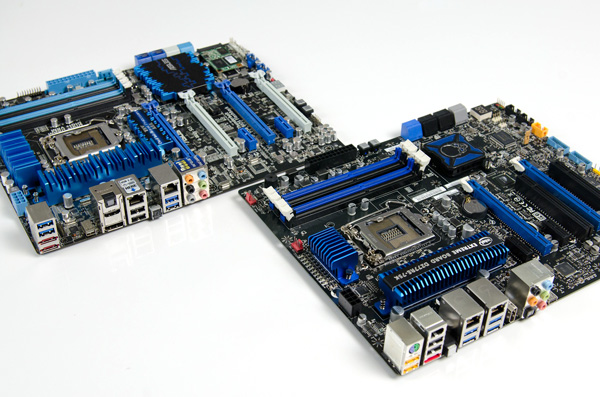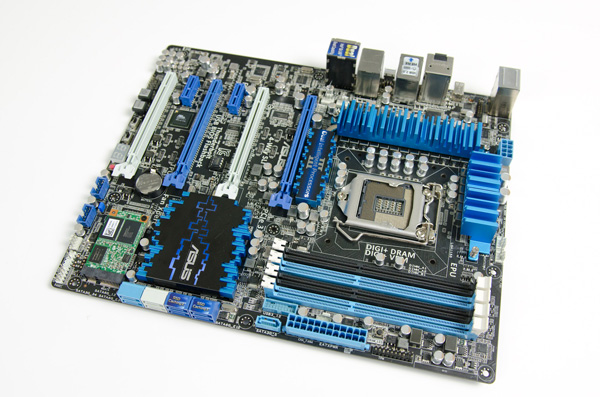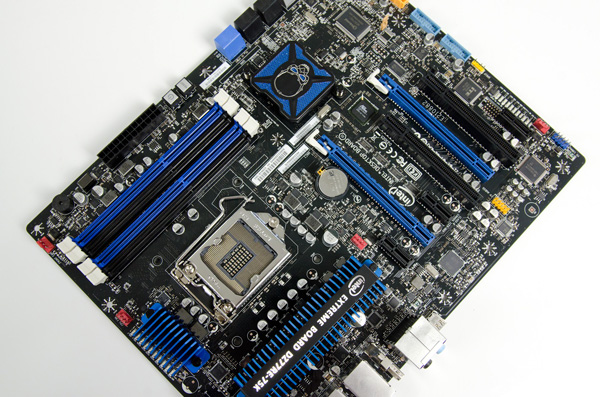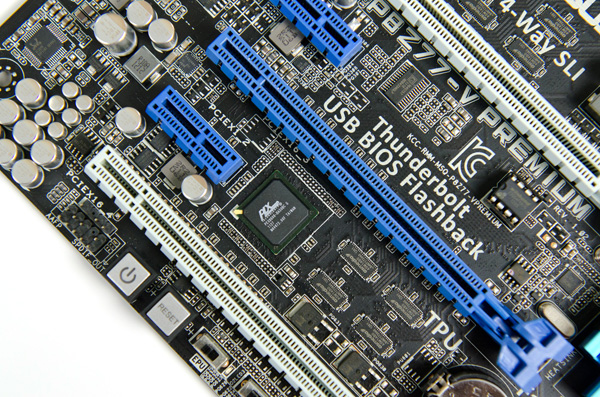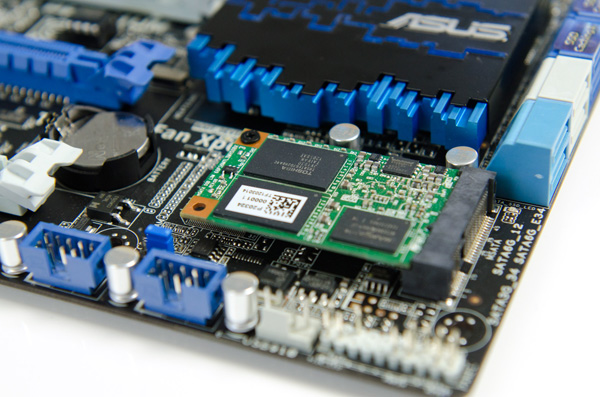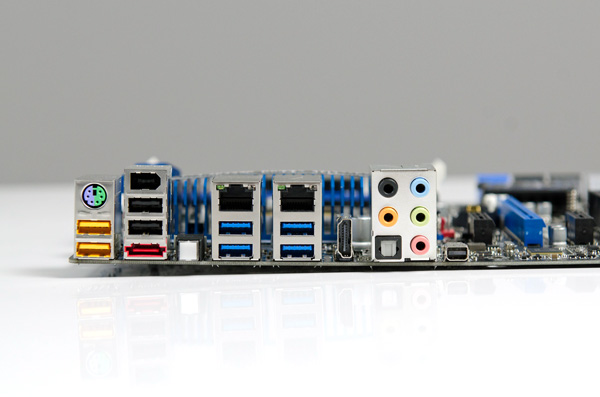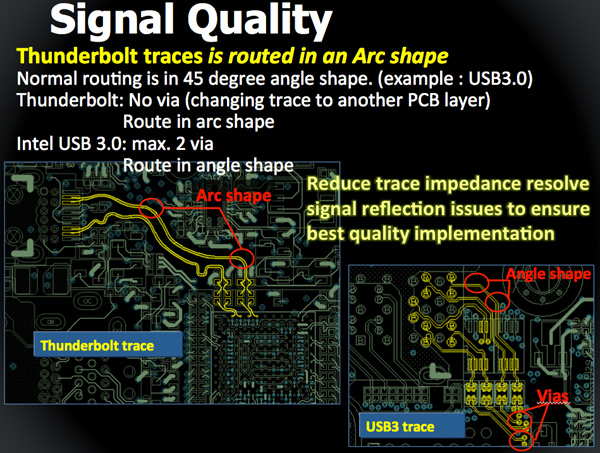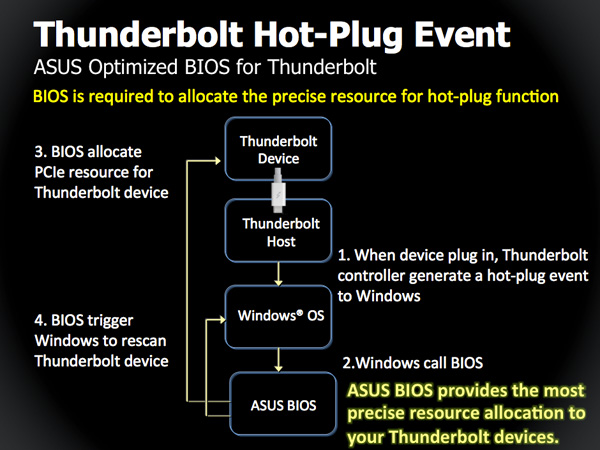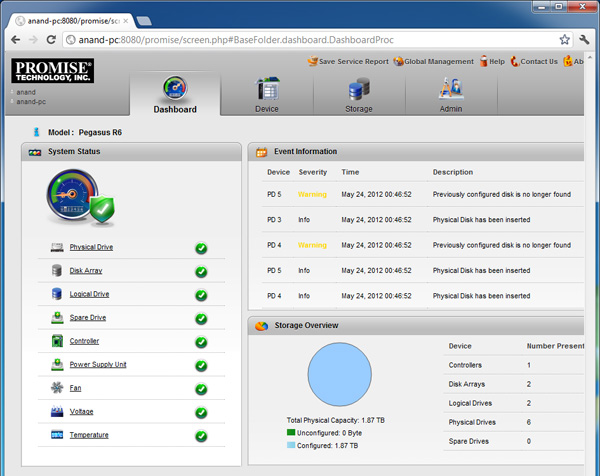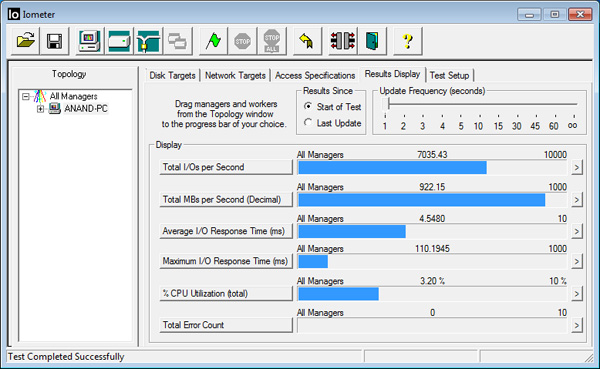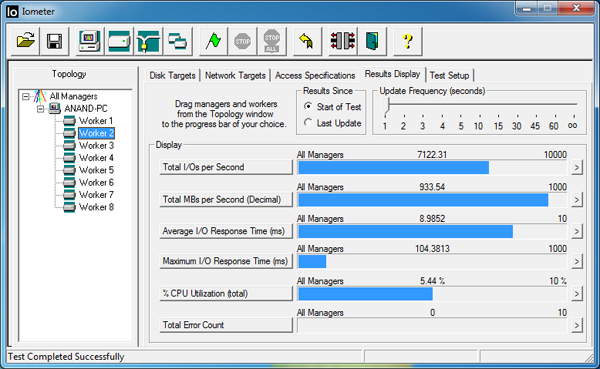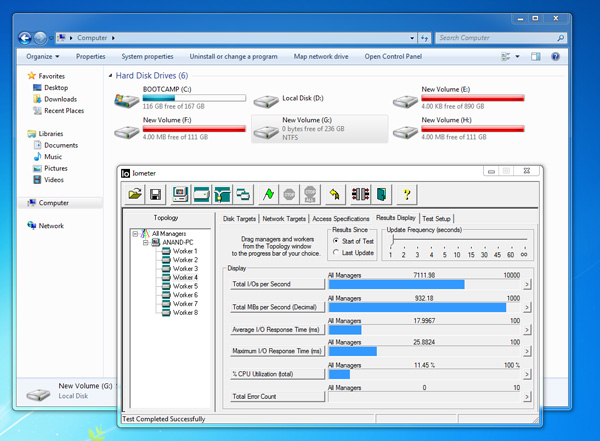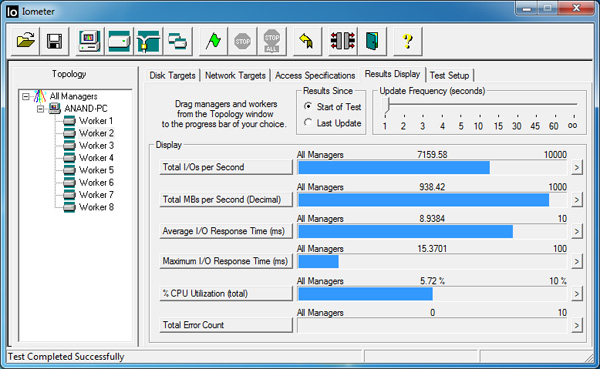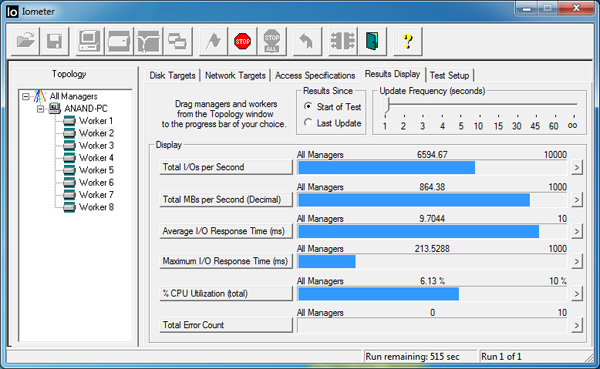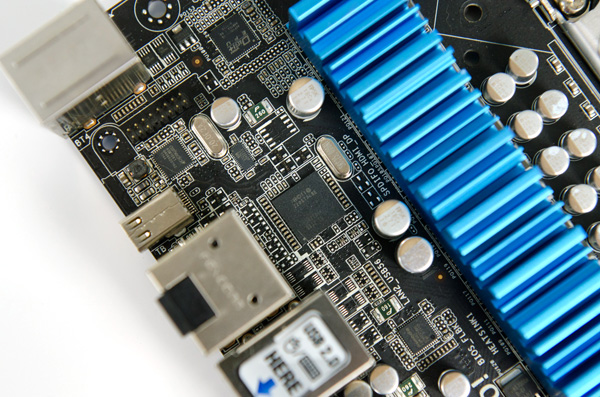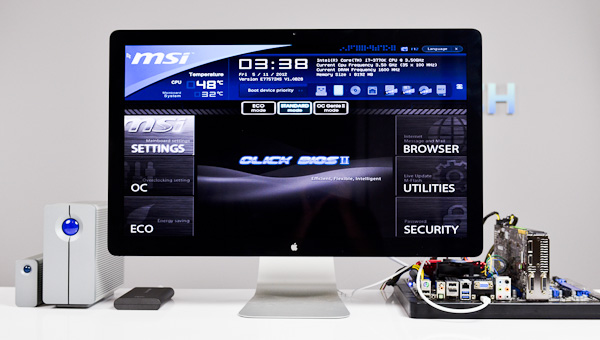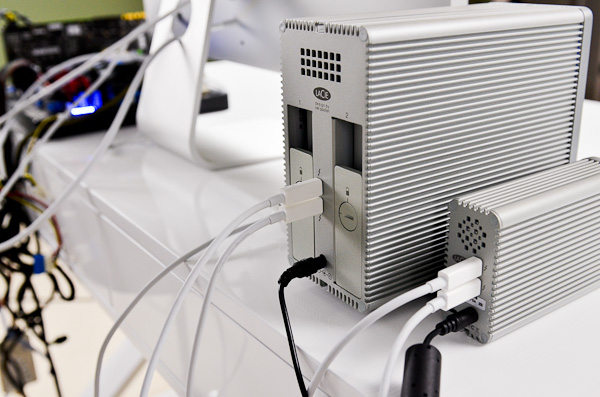
Original Link: https://www.anandtech.com/show/5884/thunderbolt-on-windows-part-2-intels-dz77rek75-asus-p8z77v-premium
Thunderbolt on Windows Part 2: Intel's DZ77RE-K75 & ASUS' P8Z77-V Premium
by Anand Lal Shimpi on June 3, 2012 2:08 AM EST- Posted in
- CPUs
- Intel
- Motherboards
- Asus
- Thunderbolt
- Ivy Bridge
- Chipsets
Quad-core mobile Sandy Bridge, 2.5" SSDs and Thunderbolt together have allowed me to use a notebook as my primary work machine. I get all of the portability benefits of a notebook, but with almost none of the performance sacrifices. The only thing I'm really missing is a good, external discrete GPU solution but that's a problem being worked on either via Thunderbolt link aggregation or the second revision of the Thunderbolt spec.
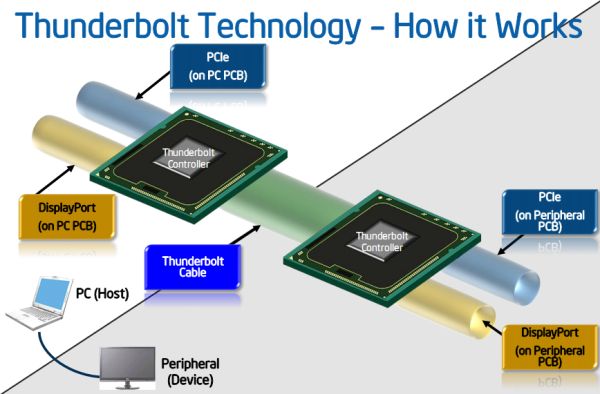
Despite what it's done for me, Thunderbolt has to be one of the most strangely handled interface specs of recent history. Intel engineered the spec, but Apple helped with a lot of the connector and cable design and as a result received a year long exclusive on Thunderbolt. Since its introduction, Thunderbolt has received a reasonable amount of support on the Mac platform. Apple even builds a display designed exclusively for use with Thunderbolt equipped Macs. Companies like Promise, Seagate, Western Digital, LaCie and Elgato are all shipping Mac compatible Thunderbolt devices as well.
With the exclusivity agreement over, Intel's partners in the Windows PC space are allowed to ship Thunderbolt enabled motherboards and systems. Making things even more bizarre is the fact that all Thunderbolt devices have to go through Intel's certification program if they are to be approved for use under Windows. Technically only Promise's Pegasus is certified (or about to be certified) for use under Windows, despite the fact that all of these Thunderbolt devices have been available for use under Windows via Boot Camp on Macs.
The complications extend even further when you realize that Apple's own products aren't certified for use under Windows. The Thunderbolt Display is only officially supported under OS X and I don't see Apple being incredibly motivated to work on Windows certification for it. Interfaces like USB are great because you can generally count on anything that physically fits in the port just working. With Thunderbolt on Windows we now have a situation where you can't assume the same.
We got the first look at a Thunderbolt equipped PC motherboard with MSI's Z77A-GD80 a couple of weeks ago. The interface worked but was not without its quirks. To be totally fair however, the Thunderbolt experience under OS X isn't perfectly problem free either. It turns out that MSI sampled that motherboard prior to making it through the motherboard certification process. Since then, the motherboard has made it through cert and has an updated BIOS that should improve its behavior.
Both Intel and ASUS sent us their latest, fully certified, Thunderbolt equipped motherboards for another look at how the interface works under Windows. With motherboards available today, it's now time to take a complete look at what Thunderbolt is like outside of the Apple ecosystem.
The Motherboards
ASUS sent its P8Z77-V Premium motherboard with Thunderbolt support, while Intel sent its DZ77RE-75K Thunderbolt board. Only the ASUS board is publicly available and is priced at $450. ASUS will have a more affordable SKU with integrated Thunderbolt available in the future: the P8Z77-V Pro/Thunderbolt, which should be priced below $300. Other ASUS boards will be upgradeable to support Thunderbolt via an on-board header + add-in card.
The Intel board starts at $262 and goes as high as $278 depending on the in-box configuration (both include WiFi/BT dongles, while the $278 version comes with front panel USB 3.0 support).
Both boards branch the Thunderbolt controller off of the Z77 PCH, borrowing four PCIe 2.0 x1 lanes. Given how full featured these motherboards are, PCIe switches are employed to allow the use of all the remaining PCIe devices connected to the PCH.
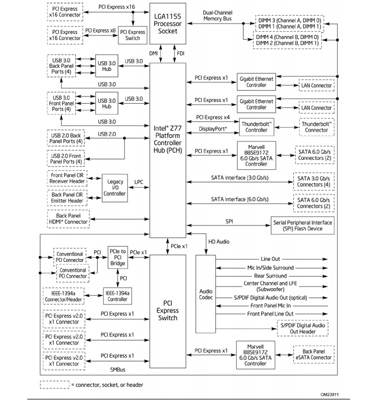
Intel's Z77 Thunderbolt Motherboard Block Diagram
ASUS goes one step further and includes a PCIe 3.0 switch to enable quad-CF/SLI support despite the limited number (16) of PCIe lanes Intel's LGA-1155 CPUs provide. ASUS' board features all the bells and whistles including a 32GB Marvell based Liteon mSATA SSD:
The Thunderbolt port on both boards can serve as either a Thunderbolt port or a DisplayPort output, similar to the behavior on a Thunderbolt Mac. Discrete GPUs are supported through the on-board Thunderbolt/DisplayPort output, provided you have Lucid's Virtu software installed.
As Thunderbolt carries more bandwidth than USB 3.0, trace routing is very important to achieving max performance. You'll notice that on all Thunderbolt boards we've tested thus far, the Cactus Ridge controller and Thunderbolt port are very close to one another. The spec for max trace length between the Thunderbolt controller and port is two inches, compared to up to 10 inches for Intel's USB 3.0 controller.
ASUS tells us that in order to reduce crosstalk it spaced Thunderbolt traces 1.5x wider than traces for USB 3.0 on its boards. Finally, all Thunderbolt traces are on the same PCB layer and don't feature any sharp angles in their route—only gradual arcs, which further improves performance. There's an impressive amount of engineering that has to go into bringing Thunderbolt support to a motherboard.
BIOS/UEFI support for Thunderbolt appears to be identical across all of the third party board makers. ASUS' Thunderbolt options look identical to MSI's for example:
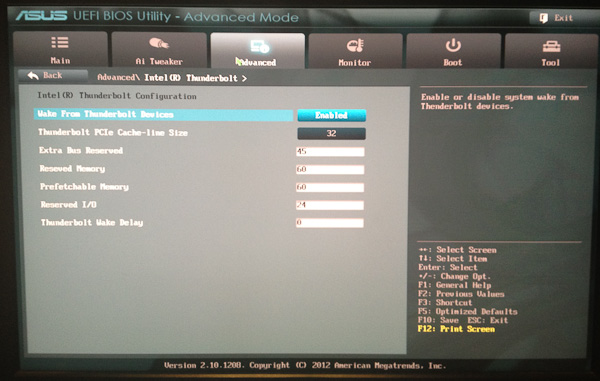
Interestingly enough, Intel doesn't actually expose any of the specific Thunderbolt settings. The Intel board just lets you enable/disable the interface itself:
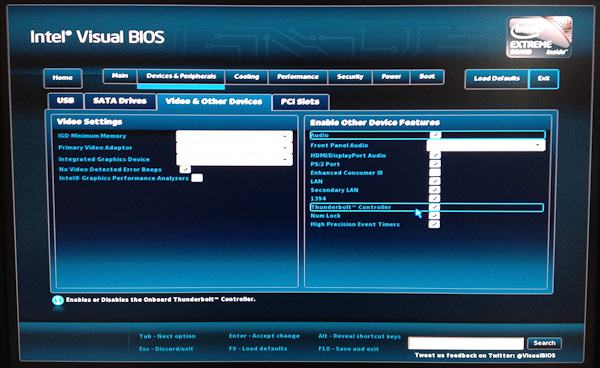
Hot Plug & Promise Pegasus, Now Supported Under Windows
For the past year, hot plug of Thunderbolt devices hasn't been supported under Windows—even on a Mac running Boot Camp. Any Thunderbolt device had to be present at POST for it to appear under Windows. In order to have a certified motherboard, BIOS/UEFI workarounds have to be present to allow for Thunderbolt hot plugging under Windows.
With a certified motherboard and a Windows certified Thunderbolt device, hot plug does work as you'd expect it to.
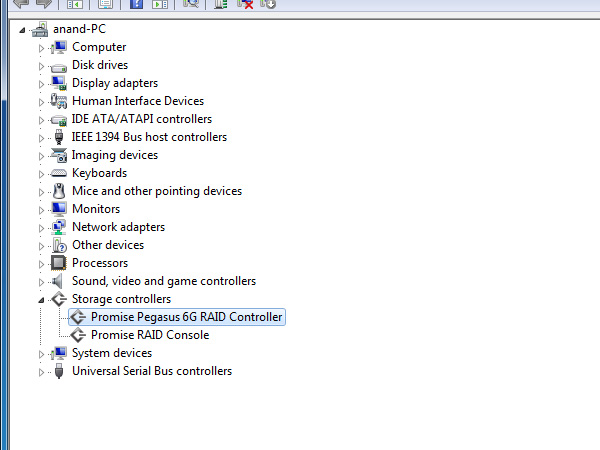
Promise provided us with a beta driver and firmware update that allowed us to use the Pegasus R6 under Windows. Hot plugging worked just fine.
The Promise Pegasus utility under Windows is actually a web based interface, but it provides the same basic functionality as the equivalent OS X application.
What happens if you don't have a certified driver? One of three things can happen. The device will either not work at all, it will compromise stability, or it will work but with some issues. The LaCie Little Big Disk is the perfect example of the last option. I just got a beta certified driver, but prior to receiving it this is what would happen when I plugged it into a running Windows system:
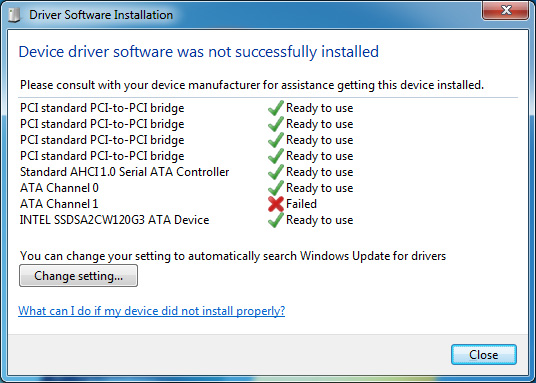
Only one of the two internal SATA channels was detected, meaning only one of the two internal drives was accessible. A reboot fixed this however.
The Elgato Thunderbolt SSD and Seagate's 2.5" GoFlex Thunderbolt adapter both use a different (lower power) SATA controller in order to stay below the 10W limit for a bus powered device (the cable, SATA and pre-Cactus Ridge Thunderbolt controllers combined already eat up around 5W).
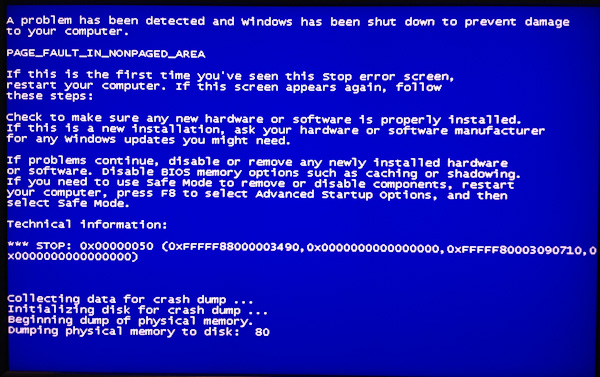
Unfortunately the ASMedia controller in these devices doesn't work well without a certified driver. Simply attaching the Elgato drive to a running Windows PC can cause a BSOD. Neither drive would even show up on either of the motherboards I tested; we'll simply have to wait for a certified driver here.
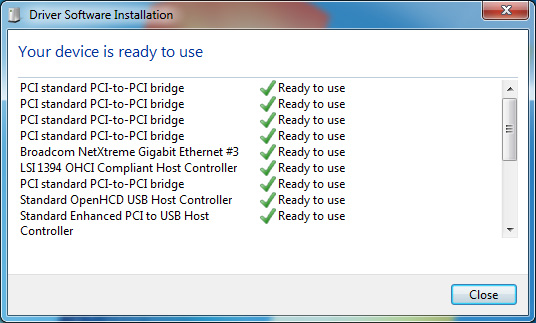
Apple's Thunderbolt Display works but not without a bunch of caveats. First you'll need access to a Mac to extract the drivers for the integrated components in the display (Firewire 800, GigE, etc.). Audio will work but only if you don't have a discrete GPU plugged into the motherboard. Firewire 800 and GigE both work. The integrated USB hub on the other hand basically doesn't work under Windows. Apple doesn't officially support the Thunderbolt Display under Windows and Intel won't certify it without Apple's support so anyone wanting to use a Thunderbolt display will just have to wait for someone else to release a similar product.
Remember the weird audio frame dropping issue I encountered under OS X with the Pegasus and Thunderbolt Display? I also encounter a similar but less severe version of that under Windows. While writing to the Pegasus and playing music through the Thunderbolt Display's speakers I get dropped audio frames, but unlike under OS X the music continues to play and is mostly recognizable—it just sounds like there's a little bit of static in the background. It's interesting that the problem exists under both OSes, but with slightly different behavior.
Performance
In our earlier look at Thunderbolt under Windows I didn't have a working Pegasus driver to really push the limits of the interface's bandwidth. With that now changed, I went to work. I started by pulling out all of the hard drives from the Pegasus R6 and installed four SSDs. I didn't have four identical drives so I threw in a mix of SF-2281 based drives and Vertex 4s. The lowest common capacity was 240GB so the resulting logical RAID-0 drive I built was just under 1TB in size. I then ran a 128KB sequential read test using Iometer to see what sort of performance I could get from the setup:
With this configuration, I achieved a very respectable 922MB/s. Note that the fastest speed I ever attained under OS X was 1000MB/s so we're not all that far off the peak. To try and move the needle a little further I hooked up the SSD based LaCie Little Big Disk and performed a 128KB sequential read across both the LBD and the SSD equipped Pegasus:
Performance moved up a bit to 933MB/s but it's clear that we should've seen a bigger increase in performance from adding another two SSDs to the chain. The fact that performance didn't go up tells me that we're reaching the limits of the interface.
As a last ditch effort I added two more SSDs to the Pegasus R6 chassis, a pair of 128GB Samsung SSD 830s in RAID-0. I repeated the 128KB sequential read test, but now across all four drive targets (2 in the LBD, and 2 RAID arrays in the Pegasus R6):
Unfortunately, performance didn't change. It's safe to say that on a single Thunderbolt port you can get just under 7.5Gbps of bandwidth, in one direction, to a chain of devices. Each Thunderbolt port should have two channels however; the second should allow DisplayPort traffic to be carried without impacting performance. To test this theory I repeated the test but with Apple's Thunderbolt Display in the chain. To drive the 27-inch 2560 x 1440 panel at 60Hz you need around 7Gbps of bandwidth (more if you take into account overhead). With the display connected I repeated the transfer test:
Performance actually went up by a few MB/s, but basically remained unchanged from the earlier 7.5Gbps peak. While I never was able to hit the 8Gbps I got under OS X, that was with the very first iteration of Thunderbolt support under OS X as well as from Promise. It's entirely possible that further tuning/firmware updates have limited performance a bit since then. Either way, it's safe to say that Thunderbolt under Windows is capable of the same class of performance we've seen under OS X.
Pushing video out to the display while pulling in data from external storage devices is actually the best case scenario for Thunderbolt, but what happens if we're sending traffic out on both channels? I conducted the same test with the Thunderbolt Display attached but this time I ran a 128KB sequential write to the attached SSDs:
There's a bit of a performance drop (~6.9Gbps vs. 7.5Gbps) but it's unclear whether this is due to lower SSD write speeds or upstream bandwidth limitations for a single Thunderbolt port.
Final Words
Armed with the right drivers, Promise's Pegasus helped prove that Thunderbolt can be nearly as fast under Windows as it is under OS X. Similar to what we saw under OS X, around 7.5Gbps isn't tough to achieve over a single Thunderbolt port. There's also no significant performance impact seen when driving DisplayPort over the same interface.
The first Thunderbolt equipped motherboards are expensive, but that's mostly a function of Thunderbolt being paired with the absolute highest end models. Over time, I'd expect more ubiquitous deployment of the interface—although it's not clear how long that would take.
Intel's certification program for Thunderbolt on Windows definitely improves the behavior of devices and generally makes the interface OS agnostic. Unfortunately, the reliance on the certification program for proper functionality under Windows means the interface will get off to a rough start on its new platform. As of today, there are no publicly available certified Windows drivers for Thunderbolt devices. This will change, hopefully over the course of the next quarter, but we still need to play a bit of the waiting game.
We also need more Thunderbolt devices. Apple's Thunderbolt Display is a great example of what you can do with Thunderbolt, but without official Windows support we're left waiting again.
Despite the teething problems, I am glad to see Thunderbolt finally arrive on Windows PCs. While there's an obvious fit for mobile, I do believe that even desktop users can benefit from Thunderbolt. At the bare minimum, it can simplify external cable management with only a single cable carrying Ethernet, audio, USB, DisplayPort, etc... from your PC to your Thunderbolt hub and/or display. The fact that it can also move high performance storage out of your chassis might also enable smaller/more interesting desktop form factors. There's an obvious fit with all-in-one designs but even things like mini-ITX become a lot more flexible with Thunderbolt.

